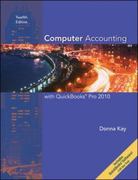


Ontario Company's inventory records for its retail division show the following at August 31: : (Click the icon to view the accounting records.) At August 31, 10 of these units are on hand. Read the requirements. Requirement 1. Compute cost of goods sold and ending inventory, using each of the following four inventory methods: Begin by entering the number of units sold and number of units in ending inventory. Then calculate cost of goods sold and ending inventory using (a) specific identification, then (b) average cost, then (c) FIFO, and finally (d) LIFO. (Round the average cost per unit to the nearest cent. Round all final answers to the nearest whole dollar.) Number (a) (b) (c) (d) of units Specific identification Average cost FIFO L IFO Cost of goods sold 16 $ 2,735 '$ 2,720 $ 2,665 $ 2,773 Ending inventory 11 $ 1,855 '$ 1,870 '$ 1,925 '$ 1,817 Requirement 2. Which method produces the highest cost of goods sold? Which method produces the lowest cost of goods sold? What causes the difference in cost of goods sold? Which method produces the highest cost of goods sold? LIFO Which method produces the lowest cost of goods sold? FIFO The difference in cost of goods sold under the two methods identified above was caused by the increase in inventory unit cost Aug 1 Beginning inventory ... 7 units @ $ 165 = $ 1,155 15 Purchase ......... 5 units @ 166 = $ 830 26 Purchase ............. 11 units @ 175 = $ 1,925 Ontario Company's inventory records for its retail division show the following at August 31: : (Click the icon to view the accounting records.) At August 31, 10 of these units are on hand. Read the requirements. Requirement 1. Compute cost of goods sold and ending inventory, using each of the following four inventory methods: Begin by entering the number of units sold and number of units in ending inventory. Then calculate cost of goods sold and ending inventory using (a) specific identification, then (b) average cost, then (c) FIFO, and finally (d) LIFO. (Round the average cost per unit to the nearest cent. Round all final answers to the nearest whole dollar.) Number (a) (b) (c) (d) of units Specific identification Average cost FIFO L IFO Cost of goods sold 16 $ 2,735 '$ 2,720 $ 2,665 $ 2,773 Ending inventory 11 $ 1,855 '$ 1,870 '$ 1,925 '$ 1,817 Requirement 2. Which method produces the highest cost of goods sold? Which method produces the lowest cost of goods sold? What causes the difference in cost of goods sold? Which method produces the highest cost of goods sold? LIFO Which method produces the lowest cost of goods sold? FIFO The difference in cost of goods sold under the two methods identified above was caused by the increase in inventory unit cost Aug 1 Beginning inventory ... 7 units @ $ 165 = $ 1,155 15 Purchase ......... 5 units @ 166 = $ 830 26 Purchase ............. 11 units @ 175 = $ 1,925









